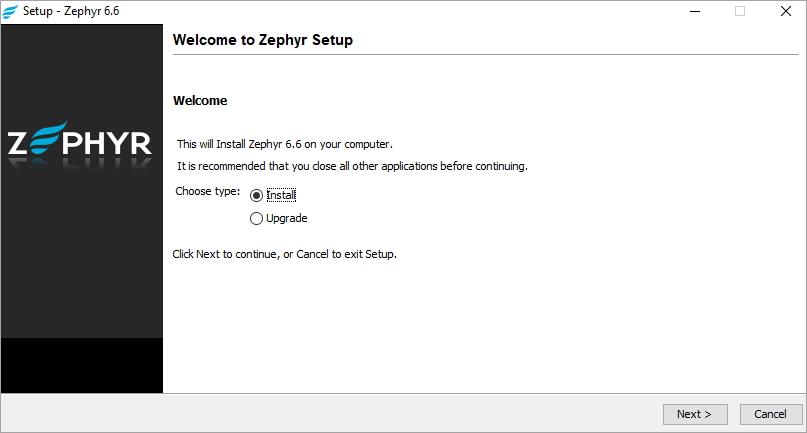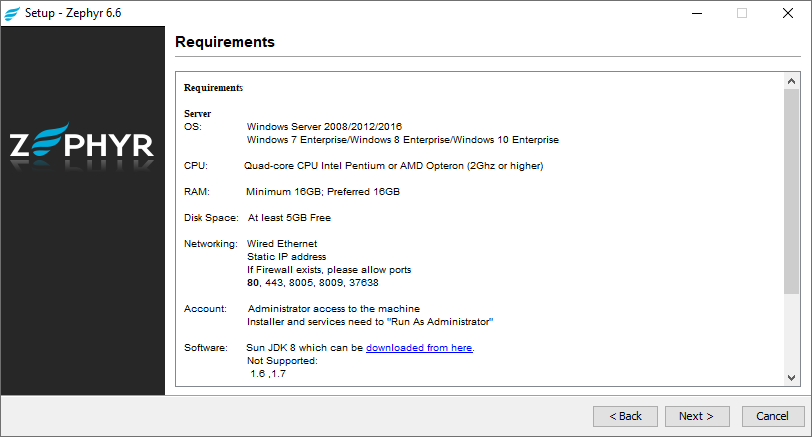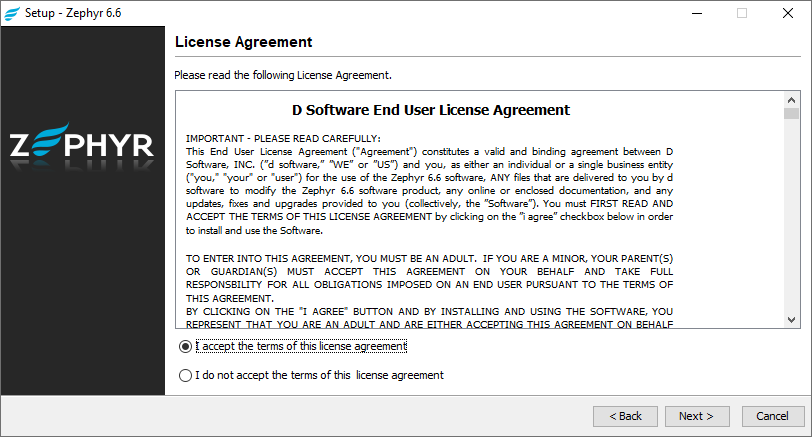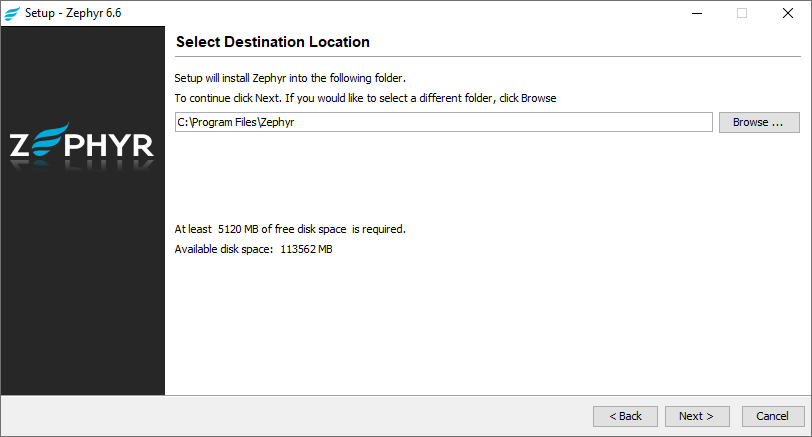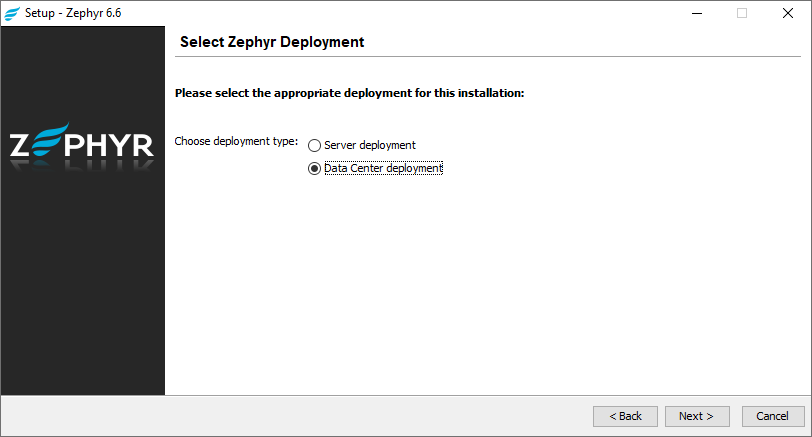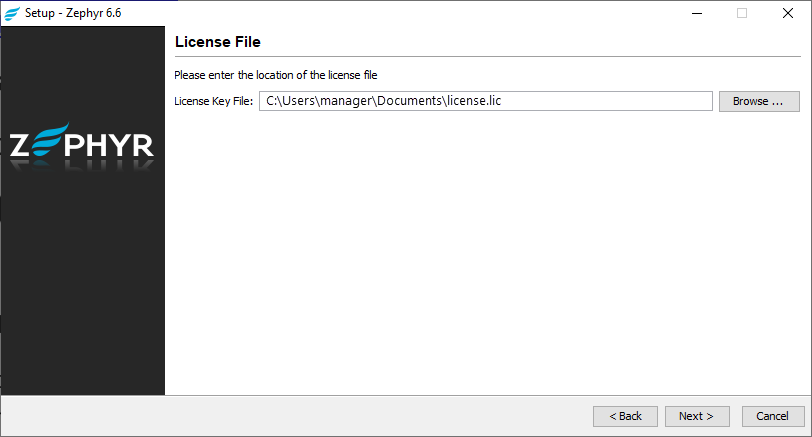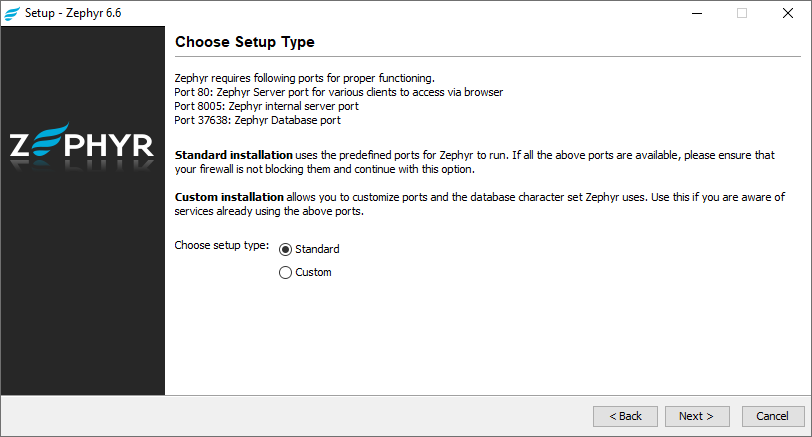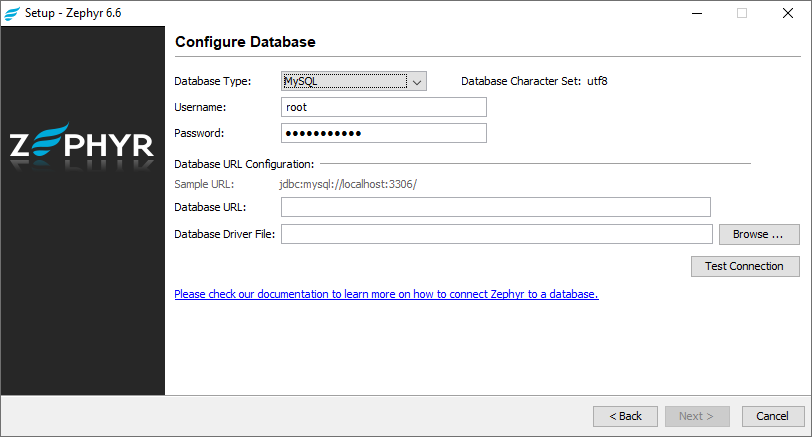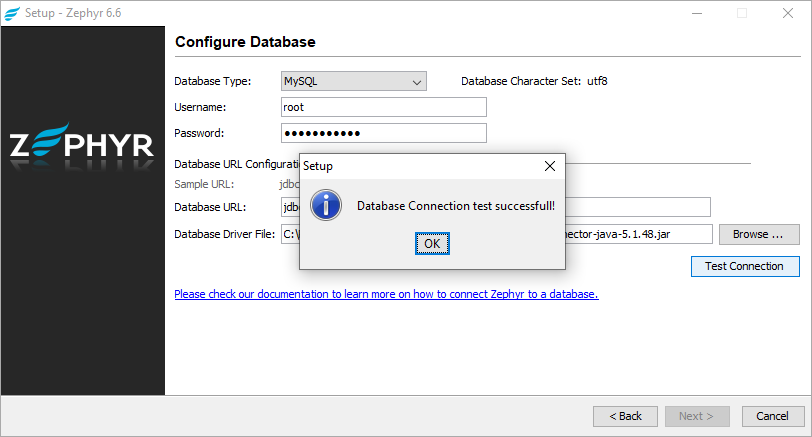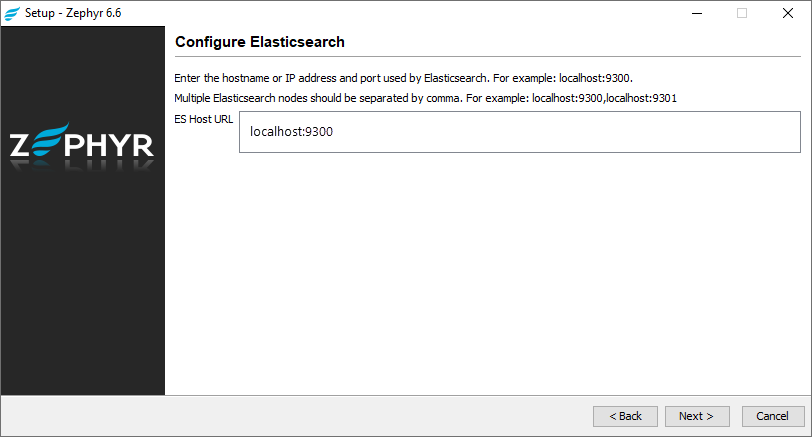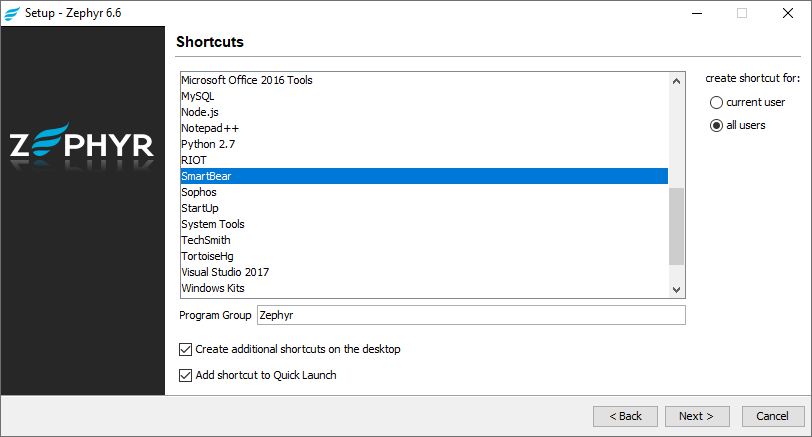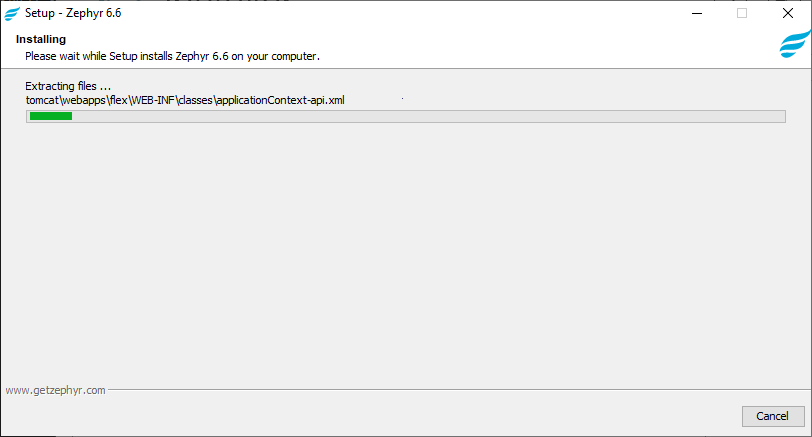When installing Zephyr on your nodes, keep in mind the following:
Install Zephyr on any drive other than drive C: to avoid permission issues, as administrator permissions may be required to work with this drive.
Use the same Zephyr version and build on all the nodes.
Zephyr installed on all the nodes must have the same license.
Prerequisites (apply to each node)
Make sure the computer meets the system requirements.
Ensure you have the license file (license.lic), as it will be required during the installation process. If you do not have it, please contact your Zephyr Account Manager or contact Zephyr Sales at sales@getzephyr.com.
Download the installation file of Zephyr Enterprise for Windows.
Download a JDBC driver and place it on each node where Zephyr will be installed.
Download and install JDK. You can use one of the following:
After you install JDK, set the PATH and JAVA_HOME environment variables:
PATH variable:
Navigate to Start > Control Panel > System.
Click Advanced > Environment Variables.
Add the path to the bin folder to the PATH variable in the System variables section. A typical path looks as follows:
for OpenJDK: C:\some_folder\java-se-8u41-ri\bin
for Oracle JDK: C:\Program Files\Java\JDK_1.8.0_<version>\bin
JAVA_HOME variable:
Navigate to Start > Control Panel > System.
Click Advanced > Environment Variables.
Find the JAVA_HOME variable in the System Variables section. If you cannot find it, add it to the System variables.
Add the path to the JDK root folder to the JAVA_HOME variable. A typical path looks as follows:
for OpenJDK: C:\some_folder\java-se-8u41-ri
for Oracle JDK: C:\Program Files\Java\JDK_1.8.0_<version>
Make sure you have specified the correct paths for PATH and JAVA_HOME.
Zephyr installation steps
1. Install Zephyr Enterprise on the first node (the installation steps on the first node differ from the steps you perform on the other nodes):
2. Install Zephyr Enterprise on another node:
Perform the steps described in Prerequisites.
Open the Command Prompt window as an admin and run the following command:
zephyr_6.6_xxx_setup_iRev_xxx.exe -VzSkipStartupData=true
The command is case-sensitive.
3. Once the installation is complete, stop the node.
You can use any number of nodes. If you want to add more nodes, repeat steps 2-3, at that, keep in mind that:
The nodes can be in different regions, but all of them must be in the same time zone.
The node IPs must be on the same subnet.
Write down the IP address of each node – you will need them at the next step.
4. After you install Zephyr Enterprise on all the nodes, you need to modify the following file on each node:
<Zephyr Directory>/tomcat/webapps/flex/WEB-INF/classes/hazelcast.properties
In this file, find the following lines and change the values as shown below:
zephyr.hz.cluster.enabled=false - set it to true.
zephyr.hz.cluster.name=zephyr-hazelcast-cluster - specify a unique name for each cluster, for example, zephyr-hazelcast-cluster_smartbear.
zephyr.hz.interfaces.enabled=false - set to true.
zephyr.hz.interface=127.0.0.1 - This is the IP of the IP interface. Replace it with an IP address that has asterisks instead of the last two components. For example: zephyr.hz.interface= 192.168.*.*
zephyr.hz.tcp-ip.enabled=false - set it to true.
zephyr.hz.members=127.0.0.1 - specify the IP addresses and port number of each node separated by a comma. For example: zephyr.hz.members=192.168.0.1:5701,192.168.0.2:5701
5. Start Zephyr on the first node. When Zephyr starts, you will see the following line in the log file zephyrlocation/tomcat/logs/thedinc.log:
***************** Zephyr Started *****************
6. Start the other nodes.
7. Stop all the nodes.
Now you can set up a shared folder. To learn how to do that, click Next Step below.
See Also
